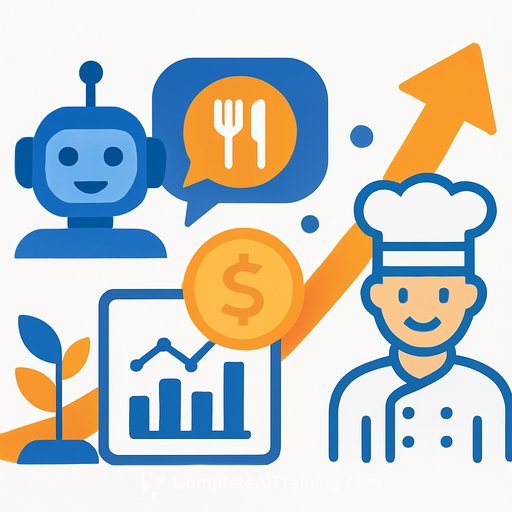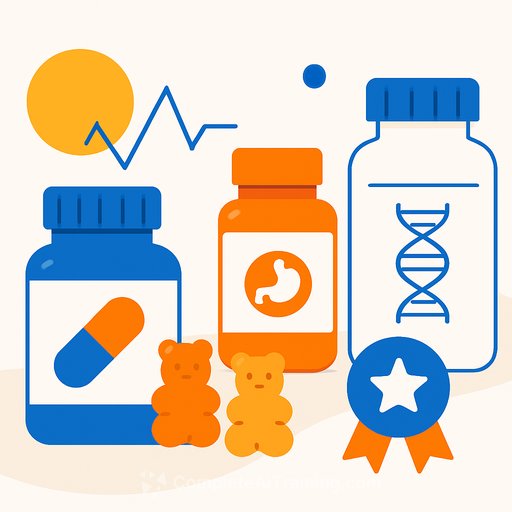AKA Foods Raises $17.2M to Accelerate AI-Driven Food Product Development
November 17, 2025 - AKA Foods has closed a $17.2 million seed round to launch AKA Studio, an AI platform built to compress product cycles from years to weeks. The round was led by AI specialists Alex and Michael Bronstein. Professor Alex Bronstein also serves as Chief Scientist at AKA Foods.
What AKA Studio Actually Does
AKA Studio pulls R&D data, ingredient specs, sensory feedback, and regulatory documentation into one structured system. It gives product teams a single source of truth and AI assistants that recommend formulation changes based on texture, aroma, taste, and constraints like cost or compliance.
As CEO David Sack put it, "The global food industry possesses vast amounts of valuable knowledge, but struggles to use it effectively. AKA Studio provides companies with the ability to securely capture, organize, and apply this knowledge."
Why This Matters for Product Development
- Faster iteration: fewer bench cycles thanks to data-driven formulation suggestions.
- Better first-pass success: sensory inputs are integrated early, not bolted on late.
- Compliance baked in: regulatory documentation sits alongside the formula, not in a separate silo.
- Clear traceability: every change is logged with data context.
Security and Deployment Options
The platform runs as a cloud-based SaaS with strong data protection standards. For teams with stricter needs, it can be deployed on-premises as an air-gapped system. Customer data remains private and is not used for model training, so proprietary formulations stay under your control.
If air-gapped architecture is new to your team, this overview from IFT on sensory science can help frame how secure, structured data improves panel quality and model outputs: IFT: Food Sensory Science.
How It Works Under the Hood
The system uses AI agents that "speak food" by modeling how ingredients, processes, and sensory outcomes interact. "AKA Foods is essentially bringing a new kind of grammar to the market, a language for food; it creates AI agents that are able to connect to various external data sources and then make recommendations for recipe improvement. A generic AI model like ChatGPT could never do that," said Professor Alex Bronstein.
Practical Pilot Plan for Your Team
- Select one product family (e.g., a base, flavor line, or format) with clear business impact and tough constraints.
- Centralize historical R&D data, ingredient specs, panel results, regulatory docs, and past COGS targets.
- Connect systems that feed the process (PLM/LIMS/ERP/lab instruments) and define data refresh cadence.
- Set guardrails: allergens, label claims, regional regs, supply limits, and target costs.
- Choose deployment mode (cloud vs. air-gapped on-prem) based on IT and compliance requirements.
- Define success metrics: time-to-first-stable-formula, number of bench iterations, average panel score lift, compliance flags avoided, COGS vs. target.
- Run A/B projects: traditional workflow vs. AKA Studio-assisted workflow for 6-8 weeks.
Where It Can Extend
The same sensory AI framework can apply to categories where formulation and sensory evaluation drive outcomes: fragrance, cosmetics, and pharmaceuticals. For cross-functional teams, that means shared tooling across multiple product lines with different regulatory profiles.
What to Watch Next
AKA Foods plans to expand the platform's reach and deepen its science across formulation and sensory modeling. Expect tighter integrations with lab systems and richer regulatory scaffolding as more teams move projects into the platform.
Upskilling Your Product Org for AI
If your roadmap includes AI-enabled formulation and data operations, consider structured upskilling for PMs, R&D scientists, and ops leads. Curated options by role: AI courses by job.
Your membership also unlocks:






